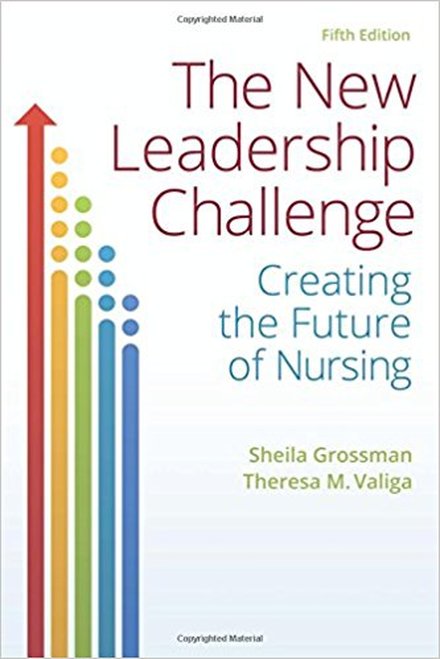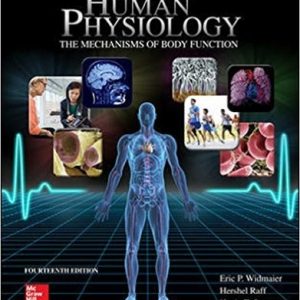The New Leadership Challenge Creating the Future of Nursing 5th Edition Test Bank

Table contents:
- ISBN-10 : 1719640416
- ISBN-13 : 978-1719640411
- Author: Sheila C. Grossman
- What is leadership?
- How do you develop your leadership abilities?
- How is leadership different from management?
- How does leadership contribute to professional and personal success…improve patient care…and affect the future of nursing?
An easy-to-read, interactive approach helps you to identify the characteristics of leaders and followers and illustrates not only how, but also when to use the qualities associated with each to achieve professional and personal success.
Description:
Chapter 1: The Phenomenon of Leadership: Classic/Historical and Contemporary Leadership Theories
Multiple Choice
Identify the choice that best completes the statement or answers the question.
____ ; Which leadership theory stresses the significance of the environment or circumstance, notes that the leader emerges but is not necessarily chosen, and gives little recognition to followers?
| 1. | Trait theory |
| 2. | Modern theory |
| 3. | Situational theory |
| 4. | Great man theory |
____ ; A new nurse manager on the surgical unit is organizing a team. Which team member will be most beneficial to achieve a high level of creativity?
| 1. | A scrub nurse |
| 2. | A medical nurse |
| 3. | A surgical nurse |
| 4. | A circulating nurse |
____ ; A nurse manager is using idealized influence to motivate staff. Which technique is the nurse manager using?
| 1. | Increasing the staff’s confidence and trust |
| 2. | Teaching the staff to be goal-oriented and responsible |
| 3. | Encouraging creativity and new approaches to problems |
| 4. | Assisting staff to continue working hard and self-actualize |
____ ; A nurse is using the “4-D” cycle of appreciative inquiry. Which “D” should the nurse use?
| 1. | Daring |
| 2. | Design |
| 3. | Decisive |
| 4. | Determined |
____ ; Which major factors in health care are creating the need for new leaders?
| 1. | Chaos, uncertainty, unpredictability, and constant change |
| 2. | Health-care reform, politics, violence, and surplus resources |
| 3. | Inferior technology, mergers, acquisitions, and one’s legal scope of practice |
| 4. | Too many workers, not enough work, unprepared employees, and technology |
____ ; In the humanbecoming leading-following model proposed by Parse (2009), what are the three major components?
| 1. | Goals, followers, and resources |
| 2. | Strategy, goals, and outcome evaluation |
| 3. | Vision, willingness to risk, and reverence for others |
| 4. | Trust, hierarchical power, and nonjudgmental attitude |
____ ; A theory of leadership proposed by Heifetz (2009) focuses on which component?
| 1. | The extent to which leaders disturb the equilibrium |
| 2. | The extent to which leaders and followers are friends |
| 3. | The extent to which leaders’ traits and personalities are emphasized |
| 4. | The extent to which leaders can recruit followers to embrace their vision |
____ ; A nurse thinks that a turning schedule will be beneficial for a patient to prevent pressure ulcers. Before implementing the turning schedule, the nurse considers using a special mattress. Which technique did the nurse use?
| 1. | Self-awareness |
| 2. | Relational transparency |
| 3. | Internalized moral perspective |
| 4. | Balanced information processing |
____ ; A nurse identifies a leader as one who is above average height and weight, has superior judgment, is decisive, and has self-confidence. Which theory did this nurse use to identify a leader?
| 1. | Trait theory |
| 2. | Situational theory |
| 3. | Great man theory |
| 4. | Contemporary leadership theory |
____ ; According to Max Mckeown, what does innovation + strategy about shaping the future equal?
| 1. | Leadership |
| 2. | Adaptability |
| 3. | Positive turbulence |
| 4. | Disturbing equilibrium |
____ ; A nurse is working in an agency that focuses on the six freedoms. In which type of environment is the nurse working?
| 1. | Social model |
| 2. | Complexity theory |
| 3. | Appreciative inquiry |
| 4. | Eastern vs. Western leadership |
____ ; Which population group ranked higher on empowering?
| 1. | Anglo leaders |
| 2. | European leaders |
| 3. | Middle Eastern leaders |
| 4. | Southeast Asian leaders |
____ ; According to The Future of Nursing: Leading Change, Advancing Health, which category of nurses should be prepared to lead?
| 1. | All |
| 2. | Some |
| 3. | None |
| 4. | Just a few |
____ ; In Phase IV of the Quality and Safety Education for Nurses (QSEN), which degree should nurses obtain?
| 1. | Vocational |
| 2. | Associate’s |
| 3. | Bachelor’s |
| 4. | Diploma |
____ ; Which important aspect of leadership is often overlooked?
| 1. | Leaving early |
| 2. | Having alone time |
| 3. | Working with a team |
| 4. | Taking vacations with family |
____ ; A nurse on a busy unit goes to the park after work and thinks about the day at work before returning home. Which authentic leadership trait did the nurse display?
| 1. | Integrity |
| 2. | Self-reflection |
| 3. | Relational transparency |
| 4. | Internalized moral perspective |
____ ; Which is necessary for a leader to be successful in health care’s volatile environment?
| 1. | Being stagnate |
| 2. | Being inflexible |
| 3. | Enjoying the present |
| 4. | Always compromising |
____ ; Which nurse has an innovative leadership characteristic?
| 1. | A nurse with a personal vision |
| 2. | A nurse with faith in the physicians |
| 3. | A nurse with a strong profit/cost focus |
| 4. | A nurse with fierce loyalty to the organization |
____ ; A nurse manager uses an assessment tool to identify eight practices, such as sensing and envisioning, and uses observations to identify personality characteristics to identify new nurses for leadership positions. Which two theories did the nurse manager blend?
| 1. | Complexity theory and situational theory |
| 2. | Innovative leadership theory and trait theory |
| 3. | Appreciative inquiry theory and great man theory |
| 4. | Transformational leadership theory and ethical leadership theory |
____ ; Which information from a nurse indicates a correct understanding of leadership theories?
| 1. | Successful leadership is authority. |
| 2. | There is a clear definition of leadership. |
| 3. | Leadership is multidimensional and multifaceted. |
| 4. | Effective leadership and ineffective leadership can be identified easily. |
____ ; A nurse is asked by a coworker how authentic leadership differs from ethical leadership. How should the nurse respond?
| 1. | “A strong self-awareness is needed with ethical ; |
| 2. | “High moral standards are needed solely for ethical ; |
| 3. | “Good communication skills are needed with authentic ; |
| 4. | “Disturbing the equilibrium is associated with authentic ; |
____ ; According to the Institute of Medicine (IOM), which type of leadership should be used to increase patient safety and decrease health-care errors?
| 1. | Trait |
| 2. | Great man |
| 3. | Situational |
| 4. | Transformational |
____ ; A nurse manager uses four processes, one of which includes individualized considerations, and enjoys the “messiness” of social processes to help new nurses “step up” to leadership positions. Which two theories did the nurse blend?
| 1. | Transformational theory and complexity theory |
| 2. | Appreciative inquiry theory and authentic leadership |
| 3. | Trait theory and humanbecoming leading-following model |
| 4. | Contemporary leadership theory and classic leadership theory |
Multiple Response
Identify one or more choices that best complete the statement or answer the question.
____ ; A manager is teaching the staff about contemporary leadership theories. Which topics will the nurse stress in the teaching session? Select all that apply.
| 1. | Dyadic |
| 2. | Relational |
| 3. | Head-down approach |
| 4. | Complex social models |
| 5. | Individual leader qualities |
____ ; A nurse manager is using Denning and Dunham’s (2010) practices to innovatively lead the medical-surgical unit. Which practices will the nurse manager demonstrate? Select all that apply.
| 1. | Sensing |
| 2. | Leading |
| 3. | Embodying |
| 4. | Dreaming |
| 5. | Following |





